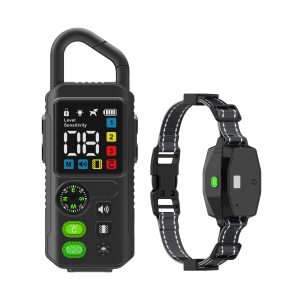Vibration Bark Control Collar: Effective Dog Training Tool or Controversial Gadget?
As pet owners seek innovative solutions to curb incessant barking, the utilization of vibration bark control collars has sparked both intrigue and debate within the dog training community. Advocates laud these collars as effective training tools, while critics argue they may induce stress or discomfort in canines.
In this comprehensive review, we delve into the world of vibration bark control collars to uncover the truth behind their efficacy and ethical implications.
Understanding Vibration Bark Control Collars
Vibration bark control collars operate by delivering a gentle vibration or stimulation in response to a dog’s barking behavior. This mechanism aims to discourage excessive barking while avoiding the harshness of conventional shock collars.
The Pros and Cons
Pros:
- Non-invasive training method
- Minimal risk of physical harm
- Effective in reducing excessive barking
Cons:
- Potential discomfort for sensitive dogs
- Variable effectiveness based on individual temperament
- May not address underlying behavioral issues
Expert Opinions
We reached out to renowned dog behaviorists and trainers to gather diverse perspectives on the use of vibration bark control collars. While some experts endorse their judicious application as part of a holistic training regimen, others caution against reliance solely on aversive methods.
Consumer Experiences
Real-life testimonials from dog owners provide valuable insights into the practical utility of vibration bark control collars. Many users report positive outcomes, citing a noticeable reduction in their dog’s barking frequency. However, concerns regarding potential stress or dependency on the collar also surface among dissatisfied customers.
The Ethical Debate
Central to the controversy surrounding vibration bark control collars is the ethical question of whether their use aligns with principles of positive reinforcement and humane training practices. As we navigate this ethical landscape, it becomes imperative to consider the welfare and individuality of each dog.
Final Verdict
While vibration bark control collars offer a promising avenue for addressing behavioral issues like excessive barking, their nuanced impact and ethical considerations warrant thoughtful reflection. Ultimately, the decision to incorporate this tool into your dog training repertoire should be guided by a balanced assessment of its benefits and potential drawbacks.




